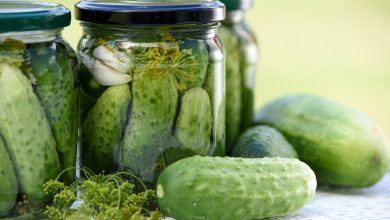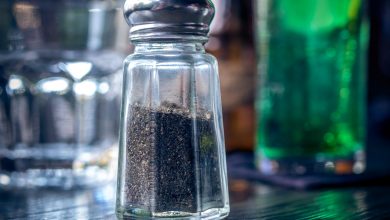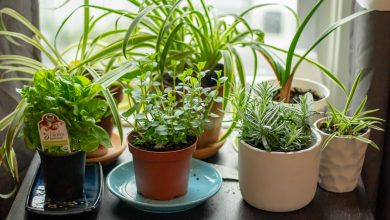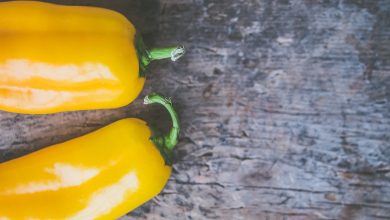Caring for Cucumbers in Your Home Garden
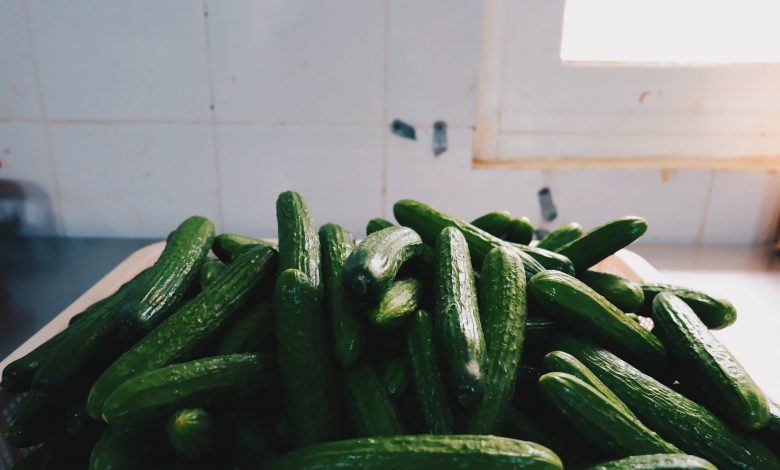
Cucumber Quick Facts
Botanical Name: Cucumis Sativus
Plant Type: Vegetable
Soil Type: Loamy (mostly consists of sand, silt, and small amounts of clay)
pH: Neutral (6-7)
Sun: Full Sun
Full Bloom: Summer

The Origin of the Cucumber
The cucumber is a vegetable known for its crisp, cool taste, slightly crunchy texture, and its fortitude for pickling. This member of the gourd family is believed to have its origins in South Asian regions like India where there is plenty of sun and water for these vegetables to thrive. While there are different cucumber varieties that popped up in different regions of North America as well, it is said that the cucumber made its way to Europe on trade routes by the Greeks or Romans nearly three thousand years ago.
Today, through vast trading in global markets, the cucumber is a widely grown and accessible vegetable that makes an appearance on plates all around the world. With plenty of warmth and water, these easy to grow vegetables can thrive in anyone’s garden as well as they did thousands of years ago when they were first harvested.

Cucumber Varieties
Cucumbers are a great addition to any garden, not only because of their ease of growth, but because of this vegetable’s adaptability to any garden size. The two most common types of cucumbers are the vining cucumbers and bush cucumbers. Vining cucumbers tend to either spread out on the ground or climb up a trellis or fence. Vine cucumbers are also regarded as being easier to pick, or harvest. Bush cucumbers, on the other hand, are known to grow in a slightly less “neat” fashion. However, it is well known that they grow well in pots or small garden boxes.
Cucumbers are often categorized into three main varieties, otherwise called cultivar groups. These groups are known as “slicing,” “pickling,” and “burpless.”
Slicers are the type of cucumbers that are often grown for North American markets. They are long, normally quite smooth, and have tougher skins. Varieties of slicers grown in other countries tend to have thinner skins. Regardless of slight differences, slicers are normally grown and harvested to eat fresh, opposed to, for example, pickling.
Picklers, the cucumbers grown for pickling (a process that involves brine, sugar and vinegar), normally grow to about three or four inches. They tend to be shorter than slicers and often have a rougher skin texture. Although any cucumber can be pickled, mass growers tend to use a cucumber that yields a more uniform length and shape. The most common kind of pickler is the gherkin, a field crop commonly grown in places like India, Turkey, and Mexico.
Burpless cucumbers are known to have a much thinner skin than slicers and picklers and often have a sweeter taste. These cucumbers are more delicate and are often grown in greenhouses through parthenocarpy. This essentially means that they are sometimes artificially fertilized. Sometimes these cucumbers are produced to be seedless. Also, because of their delicate skin, burpless cucumbers are often found wrapped in plastic at grocery stores.
For home gardeners, a traditional slicer is probably the easiest and hardiest cucumber to grow. If your purpose is to grow cucumbers for pickling, slicers can also be used for that. But there are equally hardy cucumber varieties, like the gherkin, that are perfect for pickling.

Soil and Planting
Soil and Mulch
Cucumbers grow well in soil that has a pH level of 6.0-6.8. Because they are a rather sturdy vegetable, they can still grow well in soil that is more alkaline and reaches levels like 7.8. To create good soil quality and excellent conditions for the roots, it is helpful to mix mulch into the soil. If you do not have mulch, compost, like composted manure, works well also. Mulch or organic compost is important for the vegetable’s growth, as it works to retain moisture in the soil. This is key to your cucumber’s success as plentiful amounts of water is what keeps these vegetables growing and tasting well.
Location and Sun
When choosing a location to grow either your vine or bush cucumber, it is important to find a spot that gets plentiful amounts of sunlight. Both varieties of cucumber need ample amounts of sunlight to grow well. If your garden is in a region that is typically cold with late spring arrivals, then it is recommended to use light, sandy soils. as they absorb and retain light more easily.
Planting Cucumbers
Plant cucumber seeds one inch deep into soil. Bush varieties should be about two to three feet apart, while vine varieties should be about one foot apart. Be sure to consult growing instructions for your specific variety of cucumber, as measurements may vary upon species’ necessities.
If not planting in rows or upon lattices/trellis, cucumbers can also be grown when planted in mounds. When planting in mounds, you can bury two or three seeds together opposed to just one. This can also be applied for planting seeds in garden pots.
Whether or not you have mixed mulch into the soil, it also helps to cover the topsoil with mulch or other organic litter, like leaves, to help keep pests away. There are various types of mulch that can be useful. For example, it is said that straw mulch is effective in keeping slugs and beetles at bay. Other means of keeping larger pests away, like birds or rodents, is to cover the planted area with berry netting until the roots and young vines begin to form.
If living in a location that is typically cold or does not have ample amounts of sunlight, spreading black plastic tarps can be helpful in retaining sunlight and keeping soil warm.

Caring for your Cucumbers
Cucumbers are a fairly easy plant to care for. What they require most is regular and plentiful amounts of water. It is said that cucumbers need at least one inch of water per week. An easy way to check when your cucumbers are ready to be watered is to dig one finger into the soil. If it is dry down to your first joint, then it’s time for watering.
It is recommended to try and avoid the foliage when watering. If the leaves become overly wet, this may result in an increased risk of leaf disease. So try to aim mainly for the roots. Another tip for watering is to do so in the evening or at night so most of the water doesn’t evaporate from the sun.
Once seedlings begin to form on your plant, increase watering frequencies. When the plant begins to fruit, it is recommended to water your cucumber one gallon per week. A well-watered plant allows the cucumber to become rich in flavor. If it is under-watered, it may turn out to be slightly bitter.
A Lack of Fruit
It may occur that your cucumber plant is growing well and blooming, but not producing fruit. The most likely issue is a lack of pollination. This can either occur from poor pollination by bees, cold temperatures, or not enough variation between male and female flowers.
One way to prevent this issue is to spray your plants, especially the blooms, gently with sugar water. The combination of sugar and water will hopefully attract bees that will pollinate your plants.
If you are still not seeing much fruit, then you may have to hand-pollinate. To do so, you must first locate the male and female plants. The female cucumbers tend to have a small swelling at the base of the flower while the males do not. To pollinate, use a Q-tip to gently transfer pollen from the male flower to the center of the female flower.
Pests and Diseases
Cucumbers, like any plant, are prone to certain insects and diseases. Below are a list of some of the most common pests and diseases:
- Squash Bugs: mostly go after young cucumber seedlings.
- Aphids: a common pest among many plant varieties. Can easily be dealt with.
- Cucumber Beetles: a pest that mainly eats vines and leaves and may also transfer disease unto plant.
- Powdery mildew: a form of mildew that results from leaves getting too wet.
Fungicides and pesticides can easily manage these pests and diseases in the case that your plant becomes afflicted with them. However, the most natural form of prevention is to ensure a top coat of mulch/organic matter, as mentioned, and to water plants at soil level.
Harvesting and Storing Cucumbers
It is important to harvest cucumbers at a certain length, otherwise they may grow to be bitter. The different varieties of cucumbers usually have specific lengths that are peak for harvesting.
- Slicing cucumbers: around six to eight inches
- Pickling cucumbers: two inches
- Burpless cucumber: up to ten inches
Of course, these lengths vary depending on the specific type of cucumber. For example, dill is a type of pickling cucumber that is best when picked at four to six inches opposed to the usual two. Always refer to the instructions of the specific cucumber you are growing.
Also, cucumber plants fruit often, so always be ready to harvest some cucumbers one day and another batch the next week or so. It’s important to not let your cucumbers just hang on the vines because often plants will stop producing fruit as they mature. Another thing to note is that cucumbers are best when fresh. Try not to let them sit for too long or they begin to turn yellow and even soften. When fresh, they are crisp and sweet.
The best way to store cucumbers is to keep them wrapped in plastic or a Ziploc bag and left in a cool place like a refrigerator. Because over 90% of the vegetable is water, they tend to quickly dehydrate when left in a room-temperature location. The best time to eat the cucumber is within the first week. After the first week to ten days, cucumbers start to soften and lose their flavor. If you are growing cucumbers specifically for pickling, then it is best to immediately put them in the vinegar mixture opposed to letting them sit out first. By starting the pickling process soon after harvesting, the cucumber retains much of its flavor and crunch when pickled.

Cucumbers are easy to grow vegetables that come in many varieties to match either your garden space or dietary needs. The two types of cucumbers are vine and bush plants, and those break down even further into varieties that can be used for eating raw or pickling. Probably the most all-round cucumber type would be the slicer cucumber, as it can be both eaten raw and pickled.
Once you have chosen the type of cucumber you wish to grow, it is important to prepare the soil that it will use for a steady and healthy growth. Regardless of which variety you choose, cucumbers need soil that is of a neutral to slightly alkaline pH. Mixing soil with mulch helps it retain moisture. Also, adding straw mulch or organic litter on top can help with pest prevention.
The most important thing a cucumber needs to succeed is plentiful amounts of water and sunlight. Plan your cucumber garden in a place with healthy amounts of soil, and always be vigilant in how much water the cucumber has. However, you must be careful not to water the leaves of the cucumber too much, as they will become prone to diseases like powdery mildew.
Cucumbers take anywhere from 50-70 days to grow to maturity and produce fruit quite quickly. With regular sun and water, these tasty and hardy vegetables are a great addition to any garden.
